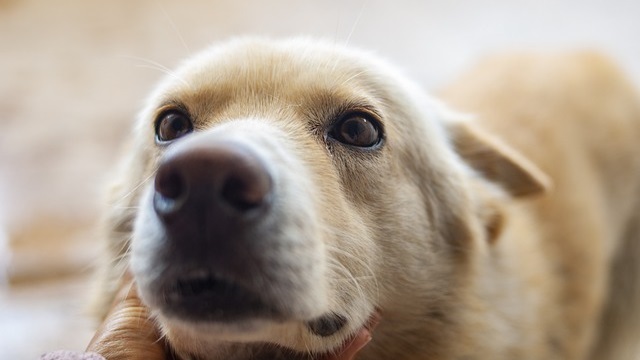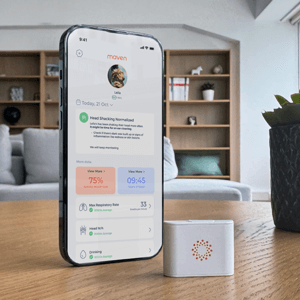Why Has My Dog Suddenly Stopped Playing? 5 Things to Watch
One day, your furry friend is happily playing fetch, and the next, they’re just not interested. You might notice your dog suddenly lethargic and wobbly, or perhaps you’re thinking, “My dog is walking slow with head down, what’s wrong?”
These changes, whether sudden or gradual, can be alarming, leaving you wondering if it’s a passing phase, a sign of aging, or something more serious.
Your worry is valid. A dog’s playful nature is often a strong indicator of their well-being. When that changes, it’s natural to seek answers.
Let’s explore the common reasons why your dog may have stopped playing and what signs to look out for.
Key Takeaways

- Sudden changes in playfulness often signal a problem. If your dog is suddenly lethargic and wobbly, or walking slow with head down, it’s usually a red flag.
- Don’t ignore gradual shifts either. Even subtle declines in play can point to underlying pain, anxiety, or early health issues.
- When in doubt, contact your vet. While causes can range from simple fatigue to serious illness, persistent changes or sudden onset of symptoms warrant professional attention.
Tracking activity helps. Tools like Maven Pet provide data that can reveal trends, helping you know when a vet visit is truly needed.
5 Reasons Your Dog May Have Stopped Playing
#1 – Illness or Pain
Physical discomfort and illnesses are among the most common reasons dogs stop playing. But the tricky part is that dogs are very good at hiding their pain as a survival instinct.
If your dog has stopped playing, they might be facing one of these issues:
- Joint Pain: This is particularly common in older dogs and breeds prone to hip and elbow dysplasia. Joint pain can make running, jumping, or even walking painful, leading to a reluctance to play. You might notice them walking slow with head down or struggling to get up.
- Injury: A subtle sprain, muscle strain, or even a thorn in their paw can make play uncomfortable.
- Infection: Bacterial or viral infections can cause a lack of energy and discomfort.
- Internal Organ Issues: Conditions affecting the heart, kidneys, or liver can lead to a reduced desire to move or play.
- Dental Pain: A painful tooth can make chewing toys or even just opening their mouth uncomfortable.
#2 – Fatigue and Sleep Disturbances

Tiredness, a lack of sleep quality, or even underlying health issues can also explain why your dog is suddenly lethargic and wobbly.
- Over-exertion: A long hike, an intense playdate, or even just a very exciting day can leave your dog needing extra rest and avoiding playtime.
- Poor Sleep Quality: Uncomfortable sleeping arrangements, disturbances like loud noises or new pets, or even certain medical conditions can disrupt their sleep cycles.
- Underlying Fatigue: Persistent fatigue can be a symptom of conditions like anemia, hypothyroidism, or even certain heart conditions that reduce energy levels.
#3 – Emotional and Behavioral Changes
Dogs are highly sensitive creatures, and their emotional state can deeply impact their desire to play.
- Stress and Anxiety: Changes in routine, a new family member (human or pet), moving to a new home, loud noises, or separation anxiety can all manifest as reduced playfulness. Anxious dogs may become withdrawn or show signs of pacing, panting, or destructive behavior.
- Depression: Dogs can experience depression, often triggered by loss (of a companion, owner, or home), chronic pain, or a lack of mental and physical stimulation.
- Boredom: A lack of engaging toys, insufficient walks, or repetitive routines can lead to boredom, making your dog seem uninterested in play.
#4 – Aging or Early Mobility Issues
As dogs age, a natural decline in energy and physical ability is expected. However, it’s crucial not to dismiss all changes as “just old age.”
- Reduced Stamina: Older dogs simply can’t play for as long or as intensely as they once could.
- Aches and Pains: Even mild, age-related arthritis or stiffness can make movement less appealing.
- Cognitive Decline: Canine Cognitive Dysfunction (CCD), similar to Alzheimer’s in humans, can lead to disorientation, altered sleep patterns, and a loss of interest in playtime.
#5 – Environmental Shifts

Environmental factors can also play a significant role in your dog’s activity levels:
- Heat: Dogs are susceptible to heatstroke. On warm days, they naturally conserve energy and may be less inclined to play.
- Changes at Home: Construction noise, new furniture, guests, or a shift in household routine can make a dog feel unsettled and less playful.
- Lack of Stimulation: If their favorite playmate is unavailable or their usual play area is inaccessible, their interest might wane.
When to Contact a Vet
“A drop in playfulness — especially if it happens gradually — can be an early sign that something’s off. It might not be obvious at first, which is why tracking your dog’s activity over time can be so valuable.” — Carolina Domingues, DVM
While some changes in playfulness might be benign, others are urgent. Contact your vet immediately if you notice any of these additional symptoms:
- Vomiting or diarrhea
- Loss of appetite
- Whining when touched or moved
- Heavy panting
- Disorientation
Even if the changes are gradual, monitoring them is key, as it can help you detect any health issues promptly.
Why Monitoring Activity Patterns Helps
It can be challenging to pinpoint exactly when a change in your dog’s behavior started, especially when it’s subtle.
When your vet asks you, “When have they started to show these symptoms?”, you won’t have to guess or give an estimate if you have objective data at hand.

Maven Pet
Health Monitor
#1 Vet-recommended pet monitor! Tracks activity, rest, respiratory rate, water intake, scratching and other health indicators 24/7
The Maven Pet health tracker provides insights into your dog’s daily movement patterns, sleep quality, and overall activity levels. By setting a baseline and continuously monitoring, you can:
- Spot trends early: Notice a consistent decline in active minutes over days or weeks, even if individual days don’t seem concerning. This could be an early indicator of pain, illness, or even developing anxiety.
- Understand their sleep: See if your dog is getting enough restful sleep, which is crucial for their energy and mood.
- Share data with your vet: Provide concrete data to your vet, helping them make a more informed diagnosis and treatment plan. When your dog can’t tell you how they feel, their activity data can speak volumes.
Don’t let subtle changes go unnoticed. Maven empowers you to be proactive about your dog’s health and happiness!
Recap

- Common Causes: Reduced playfulness can stem from health issues, fatigue, emotional distress, aging, or environmental factors.
- Key Symptoms to Watch: Be alert for signs like your dog suddenly lethargic and wobbly, or walking slow with head down, in addition to other symptoms such as changes in appetite, limping, or unusual behavior.
- When to Contact a Vet: Always seek your vet for sudden, severe changes or if concerning symptoms persist. Don’t dismiss changes as “just old age” without a vet’s opinion.
- Value of Monitoring: Tracking your dog’s activity patterns with high-tech tools like Maven Pet’s pet collar helps you identify trends, understand what’s truly normal for your dog, and offers valuable insights to your vet, ensuring immediate care.
Maven Pet focuses on improving the quality of life of our pets with technology, using artificial intelligence (AI) to enable proactive pet care. By accurately collecting and monitoring pet data 24/7 and flagging any irregularities, Maven Pet empowers pet parents and veterinarians to stay ahead of potential health issues, ensuring the well-being and longevity of our beloved companions.




